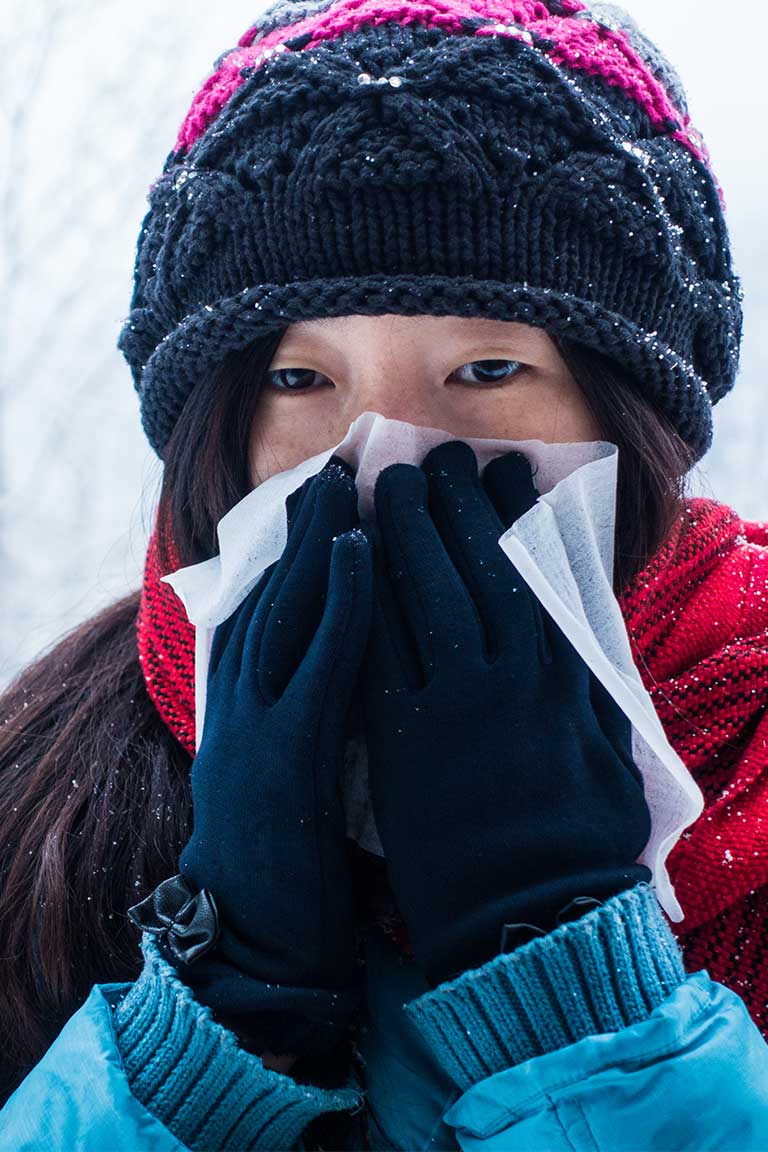Get a gift you didn’t want this year?
It’s the most wonderful time of the year! You’ve turned to the last page of your calendar, hunkered down next to the fireplace wrapped in a blanket and devoured the last of the leftover turkey.
 But despite all of the preparations you’ve made and work you’ve done, there’s a chance you’ll get a gift you weren’t hoping for this holiday season—a cold.
But despite all of the preparations you’ve made and work you’ve done, there’s a chance you’ll get a gift you weren’t hoping for this holiday season—a cold.
On average, adults catch 2-3 colds a year, and children get even more. And while it’s possible to suffer from a cold during every single month of the year, an influx of time spent with family and friends makes these next few months the prime season for illness.
It’s important to keep in mind it’s not only cold season, but flu season as well. And although the words “cold” and “flu” seem to be used interchangeably in everyday conversation, there are important variations between the two.
Cold vs. Flu
According to the CDC, the flu and common cold are both respiratory illnesses caused by different viruses. As a result, they have very similar symptoms, and it can be very difficult to tell the difference between the two.
Flu symptoms can include a fever* (or feeling feverish), cough, nasal congestion, sore throat, decreased appetite, body aches, headaches and tiredness. Many who get the flu will recover sometime between 3 and 13 days, but others with a high risk could develop complications as a result.*It’s important to note not all individuals with the flu will have a fever.
Symptoms of the common cold tend to be milder. People are more likely to have a runny or stuffy nose and on occasion, headaches, fatigue and a cough. Most individuals with a cold recover in 7-10 days.
Stop the spread of illness
This season, it’s important to take preventative action to stop the spread of the illness. These include:
- If you’re not sick:
- Wash your hands with soap and water for 20 seconds. If soap and water aren’t available, use an alcohol-based hand rub.
- Clean and disinfect surfaces that may be infected with cold and flu germs.
- Avoid touching your eyes, nose and mouth. Especially after close contact with individuals who may be sick.
- If you are sick:
- When sneezing, cover your nose and mouth.
- If possible, stay home. The CDC recommends staying home for 24 hours after your fever is gone (without using fever-reducing medication).
- Wear a mask when visiting a health care facility, especially when they ask you to do so.
- For additional tips to curb the spread of germs at home, work or school, click here.
At the end of the day, once you get a cold or the flu, there’s no cure to make it go away faster. Over-the-counter medications can help ease symptoms, but it’s important to rest and drink plenty of fluids.
So cheers to the season from all of us at ConvenientMD. We wish your next few months are merry, bright, and full of gifts you actually want.
Update: ConvenientMD was recently featured on local news channels, discussing this year’s cold and flu season and the importance of getting a flu shot. Watch both segments now on NBC Boston and WMUR News 9.
 Primary Care
Primary Care
